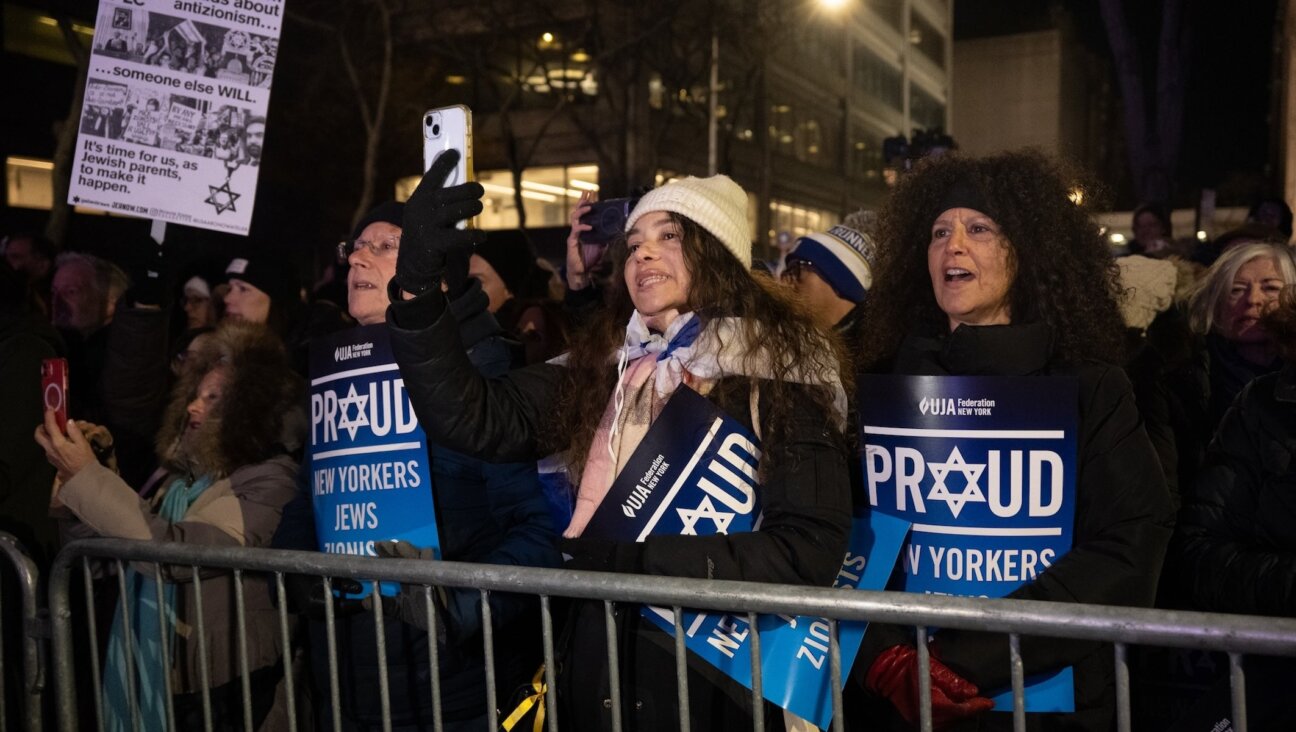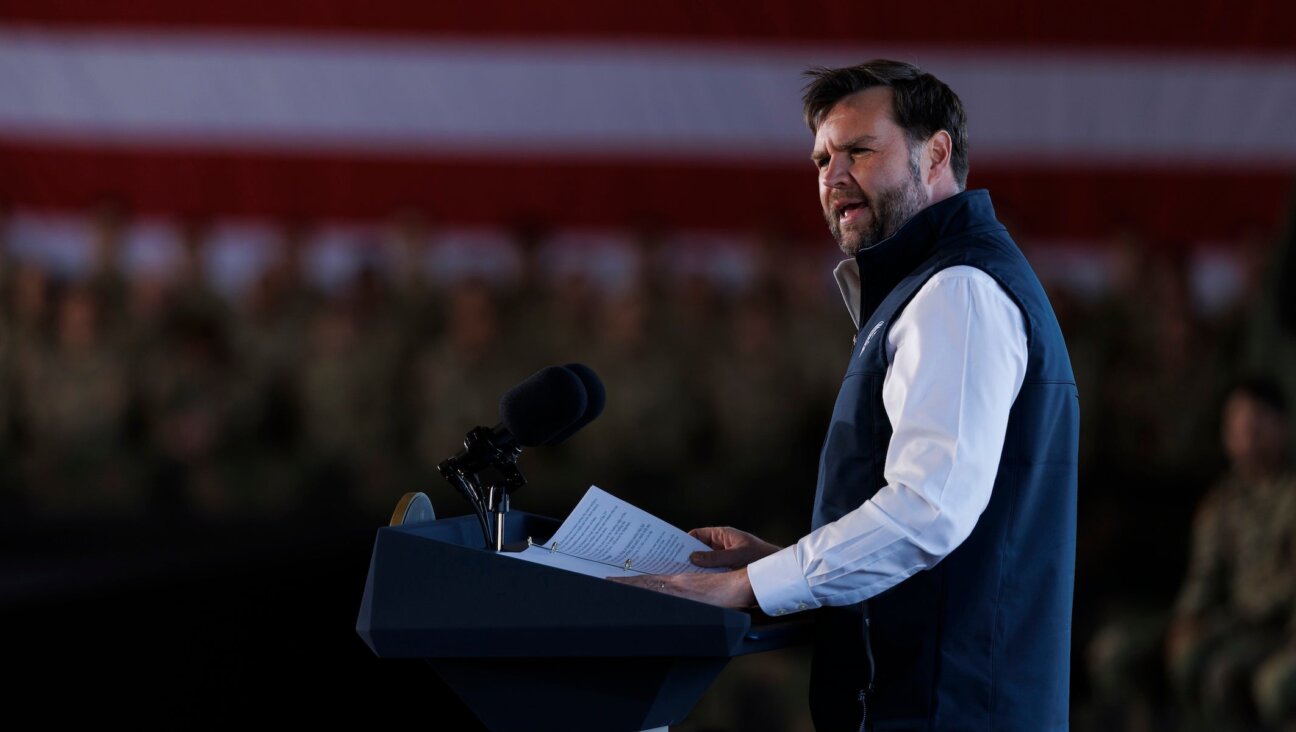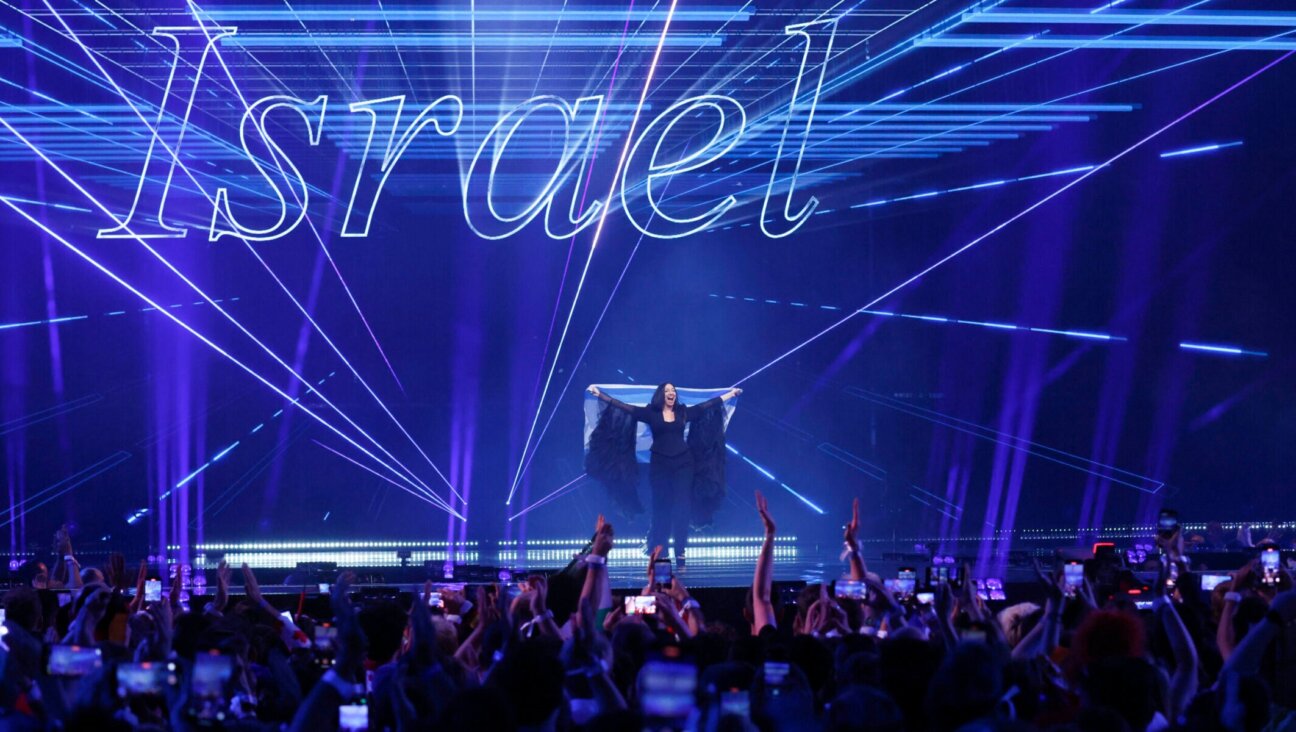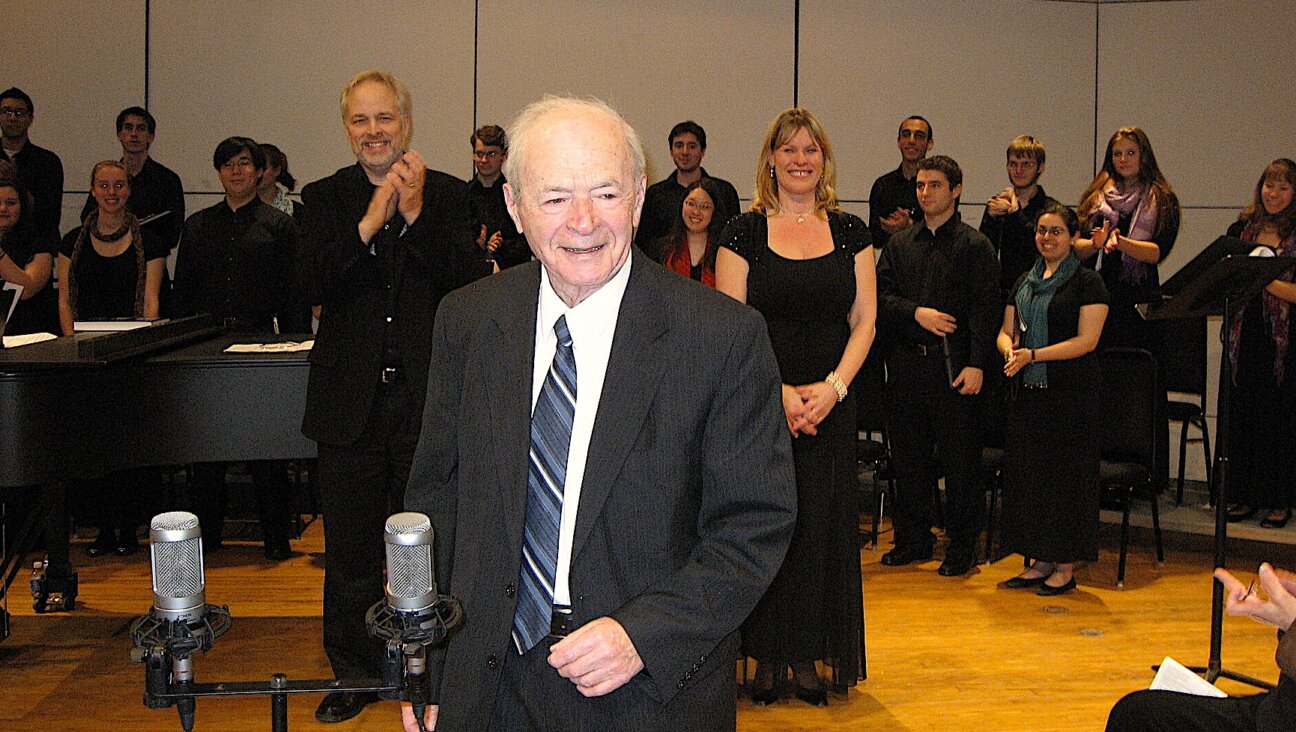Is Ultra-Orthodoxy A Response To The Holocaust?

Orthodox Jewish visitors from London walk under the infamous ‘Arbeit Macht Frei’ slogan, which literally translates to: ‘Work Makes Free,’ at the former Auschwitz I concentration camp that today is a museum, on January 25, 2015 in Oswiecim, Poland. International heads of state, dignitaries and over 300 Auschwitz survivors will commemorate the 70th anniversary of the liberation of Auschwitz by Soviet troops in 1945 on January 27. Auschwitz was among the most notorious of the concentration camps run by the Nazis to ensalve and kill millions of Jews, political opponents, prisoners of war, homosexuals and Roma. Image by Getty Images

Orthodox Jews of the Satmar Hasidim arrive to celebrate the Jewish holiday of Lag Ba’Omer, which marks the anniversary of the death of Talmudic sage Rabbi Shimon Bar Yochai approximately 1,900 years ago, in the village of Kiryas Joel, New York, May 14, 2017. Image by Getty Images
In recently watching Neflix’s somewhat controversial yet highly compelling documentary, “One of Us,” which traces the path of three Hasidic Jews who leave the fold, I was struck by a particular observation made by Chani Getter, who is herself a counselor and former Hassid and the director of Footsteps, an organization that helps former Hasidim integrate into modern society:
“The Hasidic community that exists today is an answer to after WWII. And so it’s an entire community built on survivors…these kids…belong…to the 6 million that died…The souls were brought into the world to rectify something. And that is the driving force.”
Getter identifies the Holocaust as a key driver of the rigid insularity and exclusionary practices of the Hasidic world — in particular, the banning of technology, arranged marriages, limited secular knowledge, segregation of sexes, Eastern European dress and primacy of Torah learning. Getter’s words present a rationale for why a community would sever seven children from a loving, albeit non-religious, mother, which is a main plotline of the film. Essentially, Etty, and others like her, must lose their children because one million Jewish children were lost in the Holocaust; a faithless woman raising Jewish children to be irreligious could never be tolerated in the aftermath of Judaism losing close to forty percent of its adherents.
This premise is both heart-wrenching and irrational to those individuals outside of the community. But is it accurate?
Although the ultra-Orthodox Jewish community to which I belong is Yeshivish, not Hasidic, I wonder if Getter’s assessment is correct. Is the Holocaust indeed the driving force of ultra-Orthodox Jewish communities such as mine?
My “rav” (rabbi), who heads a community in Lakewood, New Jersey, does not see the driving focus of our community the same way Getter does. He emphatically told me, “The way the frum (ultra-Orthodox) world is today has nothing to do with the Holocaust. It is completely independent. We are just continuing their tradition.” His view would seem consistent with how full-time Torah learning was introduced in this country: Rabbi Aharon Kotler (1891-1962) arrived in the US in 1941 from Europe and founded Beis Medrash Govoha in 1943, well before the end of WWII and prior to knowing the full extent of devastation done to the Torah world by the Holocaust. Rav Kotler laid this foundation, as he stated, because he felt “Torah has a future in America.” My rav feels that Torah learning is strong in the U.S. and Israel only because “the geography of world Jewry shifted from Europe to the US and Eretz Yisroel.” My rebbetzin, the rav’s wife, had a slightly different take than her husband when she told me, “We are trying to build up from the destruction, but what is incumbent upon us is never going to change. What’s asked of us has never changed. We want to bring back what was and even exceed it.”
Another rabbi I spoke to in Baltimore confirmed that “the Holocaust affected every aspect of Judaism, including the Yeshivish world, and there was a sense in the Yeshivish world of having to recreate the nation, along with a continuation of pre-Holocaust Judaism.” Further, this rabbi offered a third explanation for why the Haredi world is the way it is as follows: “The Yeshivish world is a reaction to the Enlightenment and a sort of counter-culture to modernity. The Yeshivish world wants to keep people connected to Judaism, so being more insular actually makes things easier for people because the path is clear. Sometimes, it is difficult for people to synthesize between modernity and Judaism.” Finally, as this rabbi noted accurately, the Yeshivish approach has been very successful. “Orthodoxy keeps growing while other denominations of Judaism have not,” he concluded.
My ultra-Orthodox community in Baltimore is Litvish/Yeshivish, and along with Hasidic Jews, these two segments comprise the ultra-Orthodox or Haredi community. The Litvish lifestyle, like that of Hasidic Jews, is characterized by a strict adherence to mitzvot (commandments), which we understand to represent the wishes of our creator as transmitted by a divine revelation at Mount Sinai through the Torah. Like Hasidim, we dress modestly and enforce gender segregation in religious and social settings; similarly, full-time Torah learning is prioritized over full time work or secular studies well into adulthood for men. Though not as insular as Hasidic groups like Satmar or Gur, the Litvish world is still guarded in its interactions with the outside world. Are all these trappings a result of the trauma of the Holocaust? Is my community trying to compensate or overcompensate for the Jewish life, the Torah learning, and the observance lost by the six million dead kedoshim (holy ones)?
When I was a student in yeshiva, I was taught that the Holocaust or churban (destruction) as we called it was a catastrophe for the entire Jewish nation; however, I likewise got the strong impression that ultra-Orthodox Jews died in far greater numbers than those Jews who followed other expressions of Judaism or Jewish life. Indeed, scholars hold that over half of the victims of the Holocaust were observant Jews. Visibly observant Jews were highly visible targets for the Nazis given their distinct garb and were singled out for particularly tortuous abuses since they were so easily identifiable. For example, most of the Hungarian women shown in the photos which comprise “The Auschwitz Album” at Yad Vashem have their hair covered with scarves. Photos of sadistic Nazis cutting off the beards and “payos” (side curls) of ultra-Orthodox Jews throughout the war are plentiful. Thus, even though the majority of Holocaust victims were not ultra-Orthodox Jews, the Holocaust became something highly personal to ultra-Orthodox Jews.
In the same way, the Holocaust was always portrayed in yeshiva through a spiritual lens. We were taught that Hitler was not just exterminating the Jews, but he was also trying to extinguish the Torah; somehow, he understood that without the Torah, there would be no Jewish people. Therefore, the Holocaust narratives we heard always revolved around Jews who kept their faith amid the conflagration. Observant Jews laid tefillin, blew shofar, baked matzo, davened with a minyan and shared their meager and moldy food rations with friends and even strangers in ghettos and concentration camps throughout Europe. Rabbi Menachem Ziemba, of blessed memory, continued to give shiurim (Torah lectures) in the Warsaw Ghetto and Rav Elchonon Wasserman, of blessed memory, spoke of sanctifying God’s name before he was shot at the Seventh Fort of Kaunas Fortress outside of the Kovno Ghetto. We never celebrated Holocaust Memorial Day because it was secular and commemorated the military resistance of the Warsaw Ghetto uprising; to the Yeshivish world, true defiance and triumph came from total subservience to God’s commandments and an unquestioning acceptance of His will, regardless of the circumstances.
As a result of this educational approach, I personally felt that there was always a connection between my lifestyle (in particular, my Torah learning) and the Holocaust, even though I was never explicitly told so in yeshiva. Along with the annihilation of Jewish lives during the Holocaust, there was a pervasive sense of tremendous loss regarding Torah learning. Many old and famous yeshivas like Telz, Kelm and Slabodka were destroyed, their students, rabbis and leaders mercilessly mowed down in pits or killed in concentration camps. The post-war gedolim (Yeshivish leadership) understood that it was necessary to rebuild the Jewish people — and to them, rebuilding the Jewish people meant rebuilding Torah. The Chazon Ish (Rabbi Avrohom Yeshaya Karelitz, 1878-1953) is widely reported to have said that, “two generations of full-time learning were necessary to rebuild from the ashes of Europe.” A few gedolim I knew who survived the Holocaust would specifically pause and admire the beis midrash (study hall) full of boys and men learning Torah, because that “was our answer to Hitler.” Reparation funds of survivors were generously used to fly newly married kollel couples back and forth from Israel to “show Hitler that we had won.” Without a word being said, I instinctively knew that in the wake of the Holocaust, we learned Torah all the time to renew and keep Judaism alive — and that there was no future for the Jewish people without the Torah. In contrast, in my public high school, the Holocaust was taught less emotionally. We watched an edited version of “Schindler’s List” and read “The Diary of Anne Frank” (which we never did in yeshiva) and “The Devil’s Arithmetic.” I was presented with a Holocaust that was wholly secular. There was the “Intentionalist vs. Functionalist” debate as to when Hitler decided to kill the Jews (whether early in his career when writing “Mein Kampf” or later as the war effort evolved). We learned more about the history of European anti-Semitism, the evils of prejudice and the geopolitics of genocide and less about religious Jews singing Ani Ma’amin (I believe) on the way to the gas chambers. Similarly, we touched upon how many Jewish communities such as mine in the US and Israel turned to fundamentalism as a result of the Holocaust. The Enlightenment, socialism, communism, Zionism, the Bund and Western Civilization had all failed the Jews. As a result, Jewish communities retreated into increased (and in some cases extreme) religiosity as they had done in the past when faced with significant outbreaks of anti-Semitism.
Some of these theories of Jewish withdrawal due to gentile betrayal sounded plausible even from a Yeshivish perspective. After all, Rabbi Yitzchok Hutner (1906-1980), former rosh yeshiva of Yeshivat Chaim Berlin in New York City, expressed how as a result of the Holocaust, “disappointment in the non-Jewish world was deeply imprinted upon the Jewish soul.” Similarly, Rabbi Elazar Menachem Man Shach (1899-2001), a leading Haredi rabbi in Bnei Brak, Israel, criticized Jews for accepting cordial overtures from the non-Jews since “every word they [the Gentiles] speak is fraudulent and false.” In yeshiva, we were gently reminded that the Holocaust was God’s rebuke for assimilation. Many times I heard that secular education, aside from being a distraction from Torah learning, does not make one a mensch since “the Germans too were educated.” Our mission was to learn Torah, fulfill mitzvot and only put our trust in our father in heaven. As my family rebbetzin told me regarding a proper Yeshivish outlook on the Holocaust, “Hashem (God) did send us a big slap, but He has helped us build up.”
Overall, there seems to be truth to Getter’s view regarding how the Holocaust frames the thoughts and actions of the Haredi world today, both in Yeshivish and Hasidic communities. Rebuilding a robust Jewish religious life as a reaction to the Holocaust is a salient message, whether it is announced or just assumed. As soon as Etty was introduced at the beginning of the film as a mother going “off the derech” (ceasing to be religious), I knew how her story was going to end; she was going to lose custody of her children because the Hasidic community views those kids as precious souls to be saved. Given that in the past the Haredi world came very close to physical extinction, preventing the “spiritual Holocaust” of seven children is not considered cruel by the Hasidic community — it is a consolation to them and a reminder to us that the anomaly of Auschwitz still castes a very long shadow over our people.

















